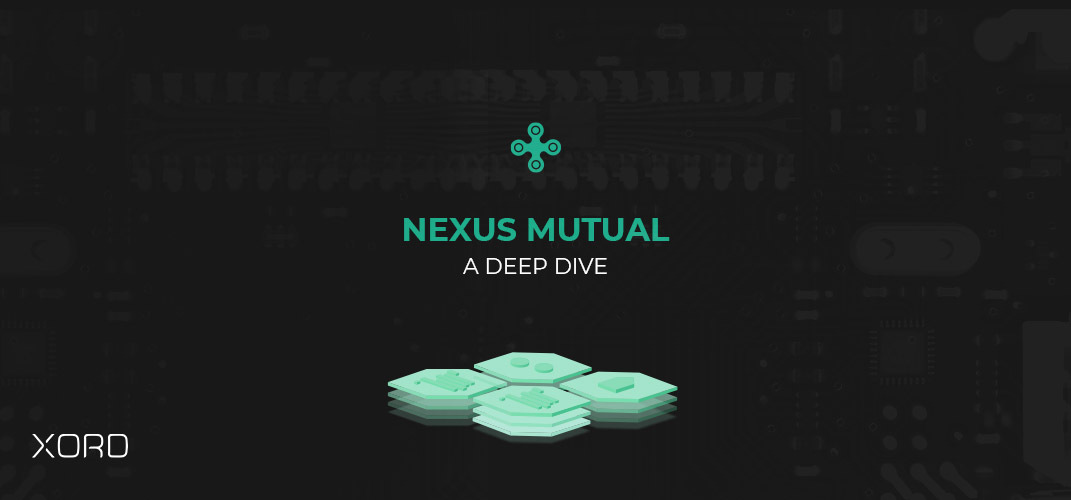
Decentralized finance (DeFi) has been the center of attraction in the crypto space these days, and Nexus Mutual will play a vital role in insurance. One of the most significant risks in DeFi lies in the failure of the smart contract. It doesn't matter if it is hacked or bugged; smart contract failure is the fastest way to lose your money. You can agree with me that it will be nice to hedge against this risk. The Nexus Protocol has made it possible for us to mitigate the threat of losing your money on DeFi.
In this article, we will take a closer look at decentralized insurance like Nexus Mutual.
It is an Ethereum-based decentralized platform that creates insurance products with community-based management and financials. You can also see it as a blockchain-based platform that offers decentralized insurance products. The first product of Nexus is the smart contract cover. This protects users against smart contract vulnerabilities. This only covers smart contracts used on the different decentralized finance (DeFi) platforms.
Today, the insurance industry is dominated by complex conglomerates that utilize models driven by profit margins, premiums, and reinvestments. The Nexus Mutual blockchain aims to disrupt the traditional insurance business model. It hopes to rewire stakeholder incentives to assess risks proactively and, at the same time, collectivizing financials.
Learn about Binance DeFi project
Nexus Mutual was launched with only one type of cover: Smart Contract Coverage. It uses a system of democratized risk assessment and pooled claim staking to protect against any financial loss. It means that staking can be executed on multiple contracts at the same time in order to increase potential rewards and minimize losses. Also, any reward earned from purchasing covers will be equally shared among all stakeholders of that particular contract. Anyone can become a member of Nexus and can purchase the Nexus Mutual native token called NXM. The NXM can be used to purchase insurance coverage and also to be part of the Nexus governance process.
The governance protocol of NXM involves the ability to assess the risks of covering a particular smart contract. The holders of NXM will have to vote on whether to accept claims or not. This usage makes NXM a multifaceted utility token that drives the Nexus ecosystem. You can only buy the NXM token on the Nexus platform, and it is not available on exchanges. Also, the utility token can only be transferred between Nexus Mutual members. The NXM token price fluctuates in response to the amount of capital the mutual holds in comparison to the amount of money needed to fulfill its existing liability across claims. When the mutual have enough funds, the price of NXM increases. On the other hand, it decreases when the mutual requires more funds.
To purchase a Smart Contract Cover, you must do the following:
The price coverage is determined by the members of Nexus Mutual, known as risk assessors. These people are experts in smart contract auditing. If these risk assessors determine that a smart contract is safe, coverage can be initiated. Now, the risk assessors have to stake NXM towards the coverage pool. The stakes will be used to pay for claims if there happens to be a breach of the smart contract. Therefore, these Risk Assessors are incentivized to only stake on smart contracts that they know to be secure. Once the staking has been made, the tokens are locked up for 90 days.
The Nexus Mutual insurance can cover all Ethereum smart contract addresses. However, there must be a sufficient amount of NXM token that is staked to cover the claim liability. Examples of smart contracts that have been covered include Compound, Uniswap, Maker, Curve, and Aave. Nexus coverage can last from a single to a number of years. Whereas the staked insurance ranges from 1ETH to 50000 DAI.
The members of Nexus Mutual and an advisory board through its DAO are responsible for the platform's governance. The Advisory board comprises five members that include company founders, industry experts in smart contract security, insurance and mutuals, and legal and regulatory bodies. Also, any member can be voted into the advisory board to replace an already existing member.
A member can suggest changes to the blockchain protocol by submitting a proposal through its governance platform. Once a member submits a proposal, the advisory board will verify the proposal and suggest an outcome for it. They will also determine the total NXM token rewards shared amongst members who participated in the voting process. The voting itself is also executed through NXM. The weight of a member's vote is proportional to the amount of NXM token the members staked for voting. One thing to note is that rewards are shared among the number of those who vote. The sharing is not proportional to the number of tokens that voted. In the end, this process helps to ensure a more equitable reward-based structure that is not dependent on NXM holdings.
Also, read about Ethereum Enterprise Alliance
In the case of traditional insurance, the insurance agency decides on what to do with its customers' money. The insurance agency decides on how to invest, the risks to cover, when stakeholders are paid, and so on. They always carry out lengthy damage assessments and rarely pay the actual worth of the damaged asset. The reason is that the interest of both the insured and the insurer are more adversarial than cooperative.
On Nexus Mutual, membership tokens and incentives are more aligned to help develop the community. It is far better than the adversarial relationship described above.
Although blockchain for insurance has been growing as a sector, Nexus Mutual is the first decentralized model being applied in insurance. Its Smart Contract Cover has been essential in the decentralized finance (DeFi) ecosystem. Some future Nexus insurance products include coverage for crypto wallets, etc.
Share:
